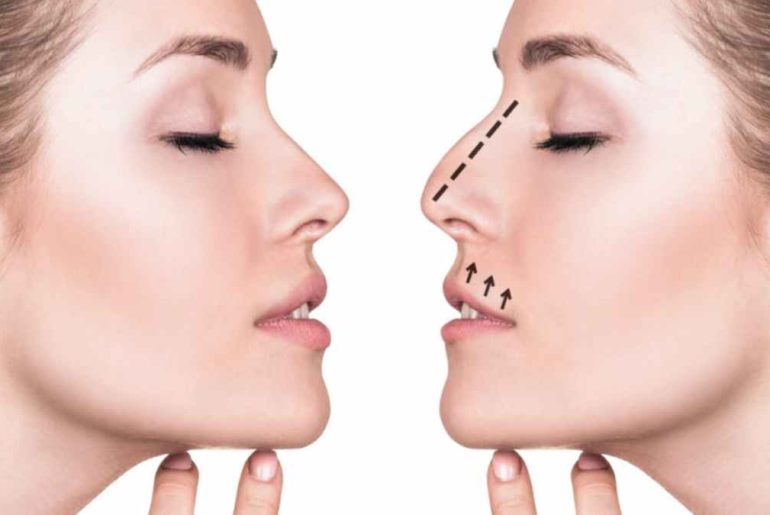Rhinoplasty procedures can be performed at a hospital, a doctor’s office, or an outpatient surgery center. Your doctor will provide either local or general anesthetic. If the operation is easy, you will be given a local anesthetic to your nose, which will also numb your face. You may also be given medicine through an IV line, which will make you tired yet keep you awake. You will be rendered unconscious with general anesthesia by inhaling or receiving medication through an IV. General anesthesia is commonly administered to children. Your surgeon, Alexis Furze, MD, will make incisions between or inside your nostrils while you are numb or asleep. Before beginning the contouring process, they will detach your skin from your cartilage or bone.
Additionally, if your new nose requires extra cartilage, your doctor may take some from your ear or deep inside your nose. You may be given an implant or a bone transplant if more treatment is needed. A bone graft is an adding of bone to the bone in your nose. The therapy takes one to two hours. It may take longer if the procedure is complicated.
Rhinoplasty Recovery
People commonly wear a nasal splint for the first week after rhinoplasty. You must keep your head up for at least 24 hours following the procedure. After surgery, you should expect some swelling and bruising around the eyes, which should go away by the third day. Also, it can linger for up to two weeks. Expect some nasal swelling, which you and your physician will most certainly notice. This will subside during the following six months. The complete form of your nose will be seen once it has healed completely. You should avoid strenuous activities for 3 to 6 weeks following surgery.
Common Risks of Rhinoplasty
While rhinoplasty’s dangers and side effects are typically minor, it is beneficial to be prepared for what you may encounter during and after your treatment. The following are some of the most typical adverse effects of a rhinoplasty:
1. Pain:
Patients undergoing rhinoplasty may expect some soreness following their treatment, although this typically lasts only a few days and is well handled. Your doctor will prescribe pain medicine.
2. Bleeding:
Some people may suffer minor nasal bleeding as the blood vessels in their nose attempt to mend following surgery. This should go away within a few days, but it is crucial to contact your doctor if this condition persists.
3. Swelling:
Swelling is an inevitable and common adverse effect of rhinoplasty. The fragile tissue, cartilage, and bones in your nose will be manipulated and traumatized throughout the treatment, creating swelling as the body attempts to heal the damage. Most of the swelling goes down within a week or two, and your doctor may advise you to use ice packs or other measures to alleviate this problem.
4. Bruising:
In addition to the swelling, you should expect bruising for the first 7-10 days after rhinoplasty. This symptom may continue longer for certain people, particularly older men and women. Bruising around the eyes, often known as black eyes, is a typical adverse effect of rhinoplasty.
Although rhinoplasty is very safe and straightforward, recovery time can be lengthy. The tip of your nose is particularly sensitive and might be numb and swollen for months. You may completely heal in a few weeks, but some symptoms may last for months. It might be a year before you ultimately realize the outcome of your operation. Call Alexis Furze, MD, to schedule a consultation today to determine if you are an ideal candidate for rhinoplasty.

